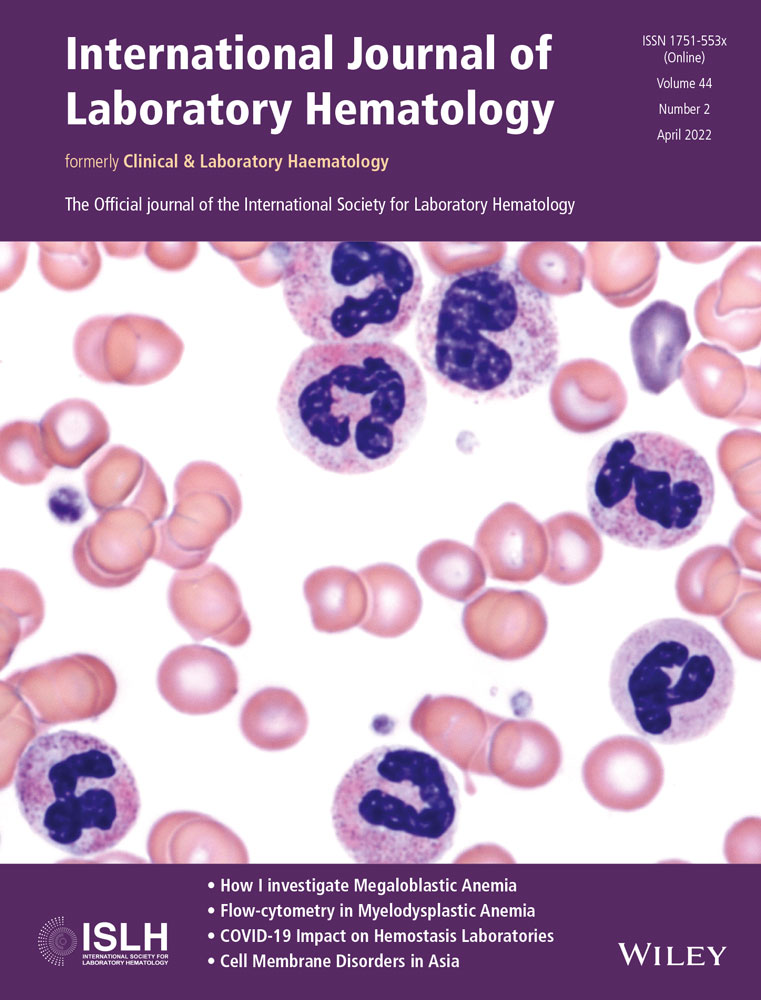Laboratory methods for monitoring argatroban in heparin-induced thrombocytopenia
Abstract
Introduction
The Summary of Product Characteristics for the direct thrombin inhibitor argatroban states monitoring should be by activated partial thromboplastin time (APTT), with a target range of 1.5-3.0 times the patients' baseline APTT. APTT may be influenced by coagulopathies, lupus anticoagulant and raised FVIII levels. Previous studies have shown sensitivity differences of APTT reagents to argatroban. Some recent publications have favoured the use of anti-IIa methods to determine the plasma drug concentration of argatroban. This study aims to compare the anti-IIa assays: Hemoclot thrombin inhibitor assay (HTI) and Ecarin chromogenic assay (ECA) alongside the APTT.
Methods
Residual plasma of 25 samples from 8 patients (3 with COVID-19 and HIT: n = 18, 5 with HIT: n = 7) was tested at two sites: site A: Sysmex CS5100 by HTI and APTT (Actin FS and SynthASil), and also on Stago STA Compact Max: ECA and APTT (CK Prest); and site B: Stago STA R Max 2 by ECA and APTT (Cephascreen).
Results
Mean APTT ratio was 1.96 (Actin FS), 1.84 (SynthASil), 1.59 (CK Prest) and 2.48 (Cephascreen). Mean argatroban concentration by HTI was 0.60 µg/mL and by ECA was 0.65 µg/mL (site A) and 0.70 µg/mL (site B). There was a poor correlation to HTI in APTT ratios (range r2 = .0235-0.4181) with stronger correlations between ECA methods to HTI (r2 = .8998 site A, r2 = .8734 site B).
Conclusion
This study confirms previous publications on the unsuitability of APTT and expands this by being multisited and included APTT reagents that use mechanical clot detection. Both anti-IIa methods are more suitable.
CONFLICT OF INTEREST
SG, SK, BH and ZC declare no conflicts of interest. ASB works for Stago UK.
Open Research
DATA AVAILABILITY STATEMENT
Data available on request due to privacy/ethical restrictions.




